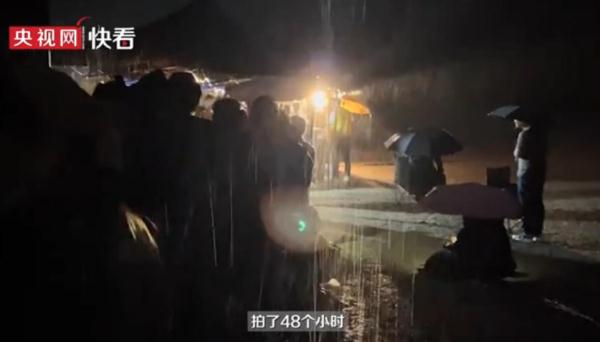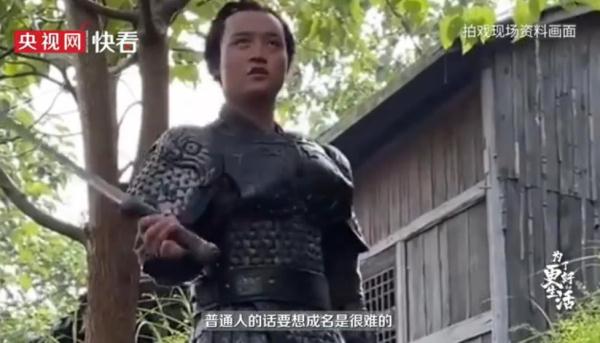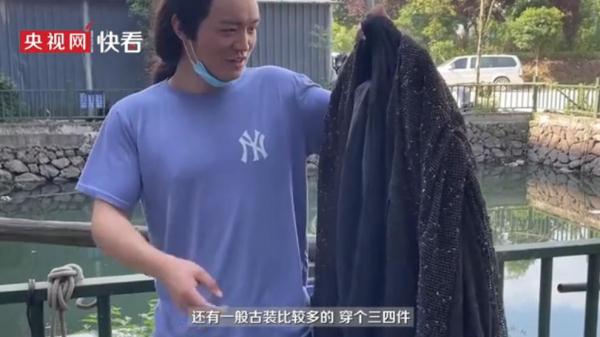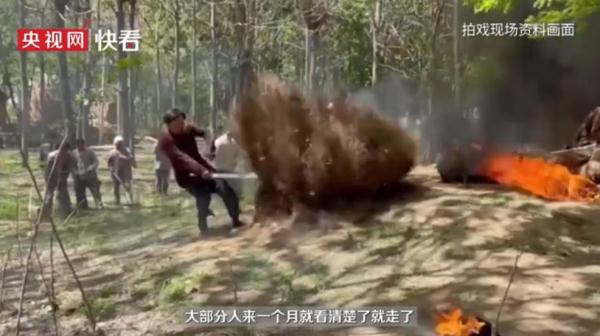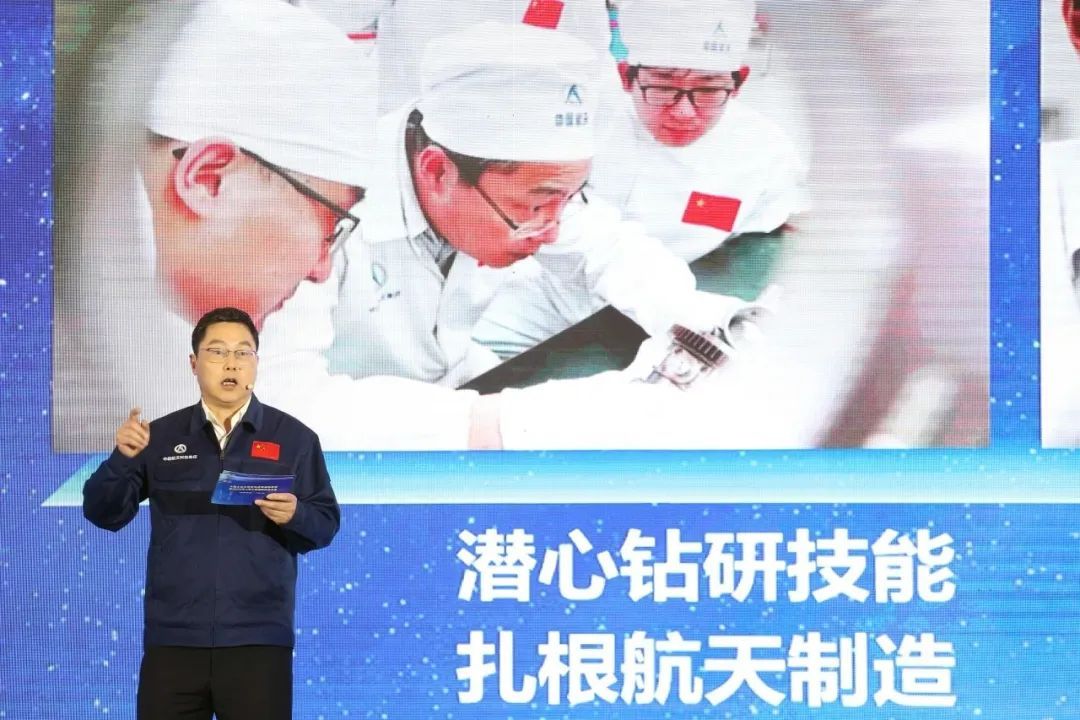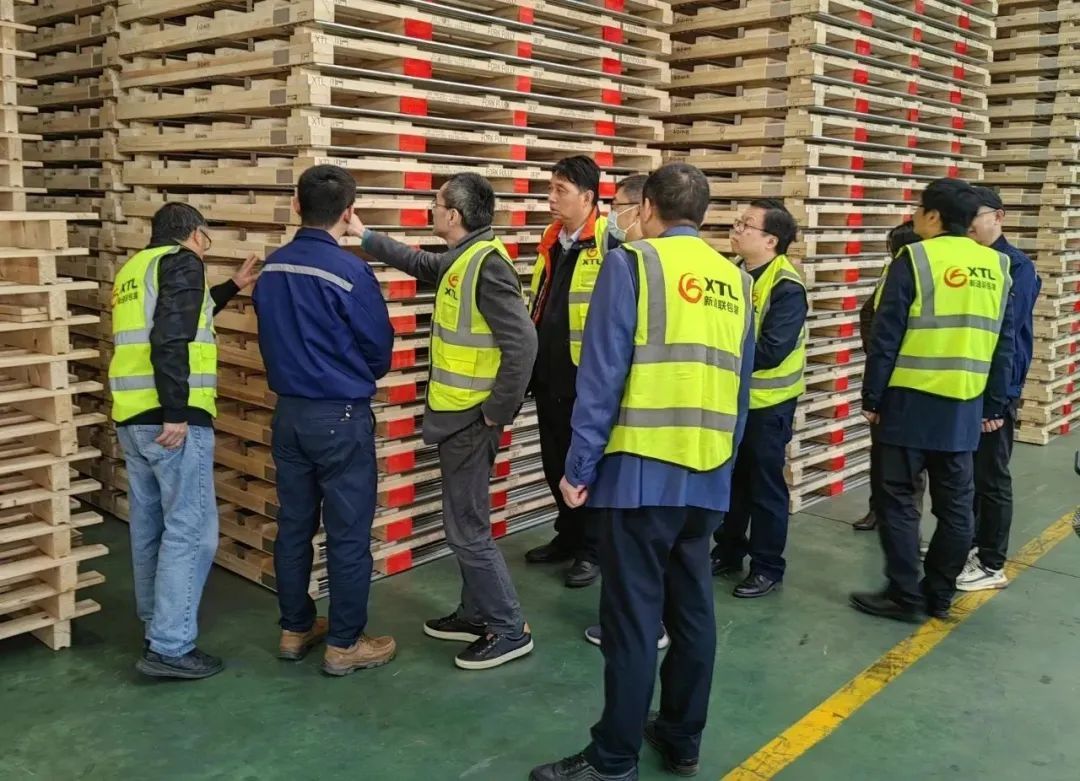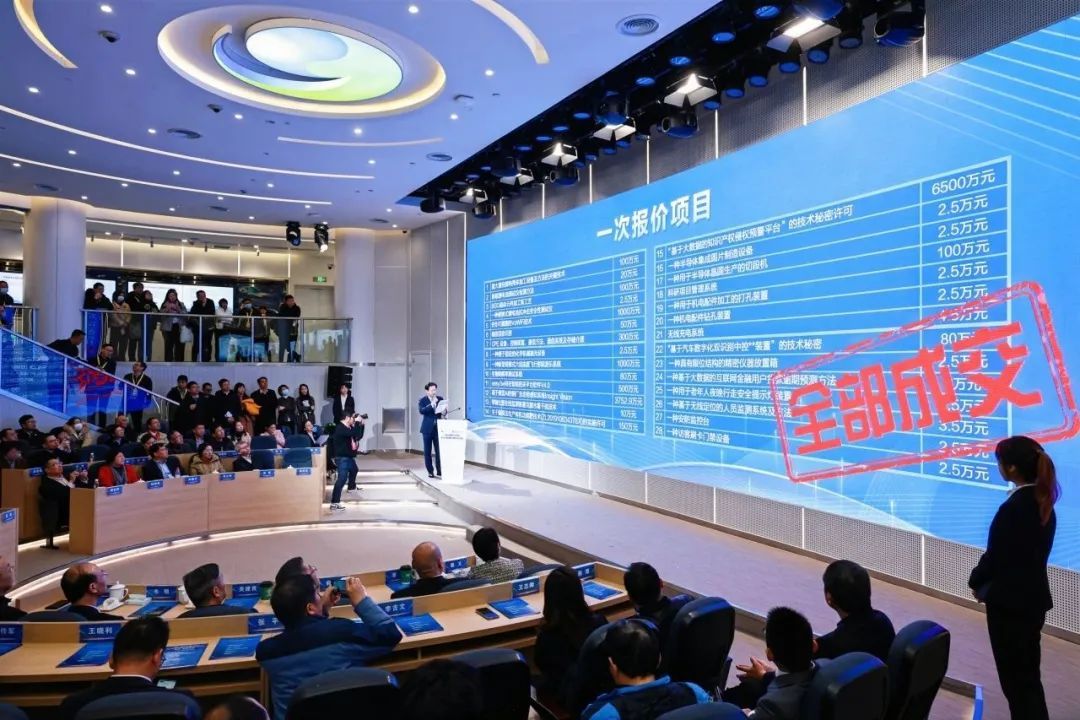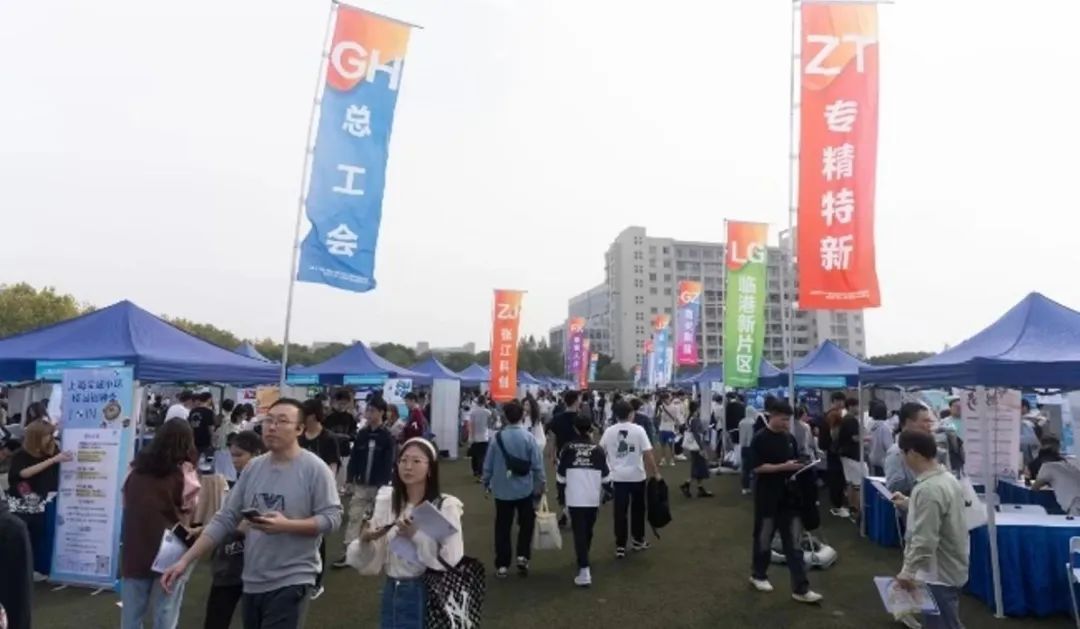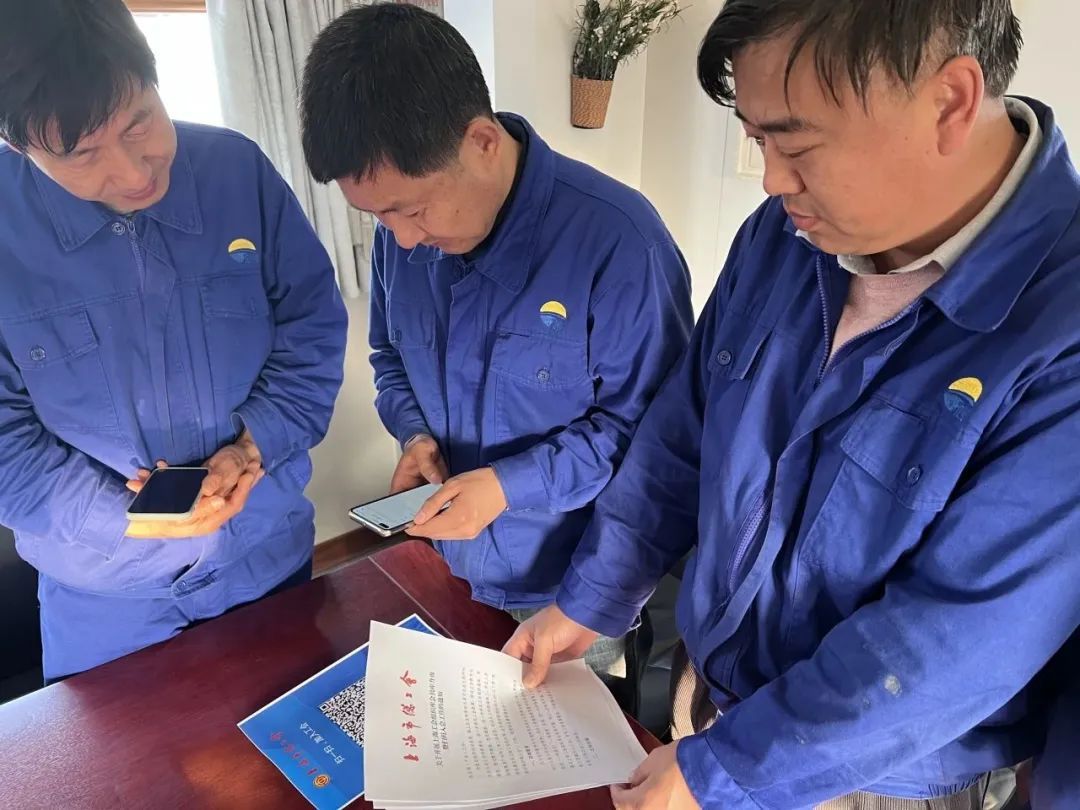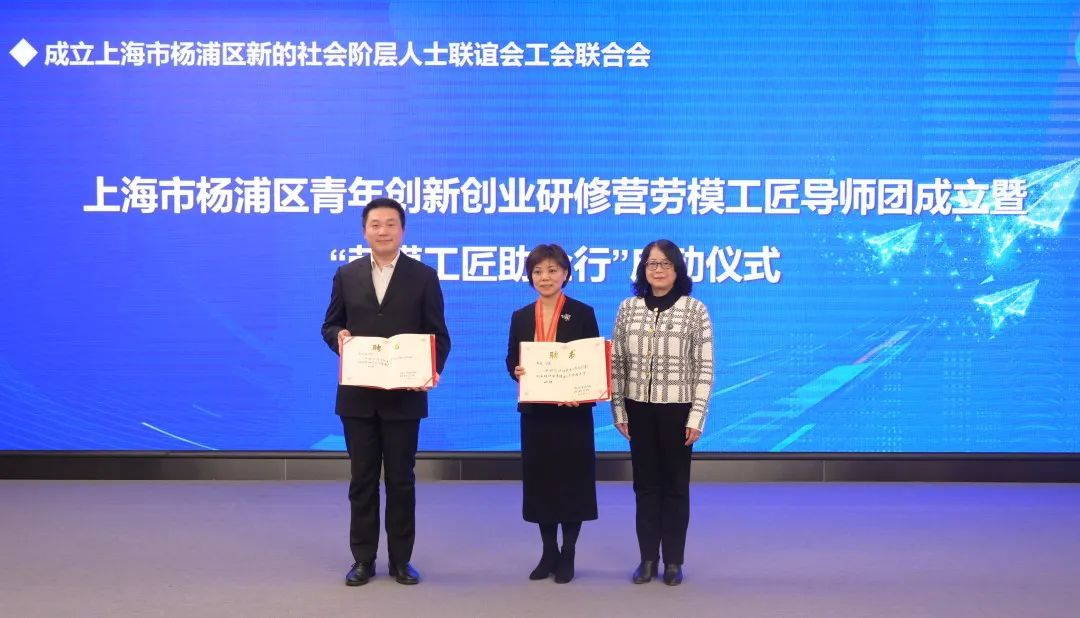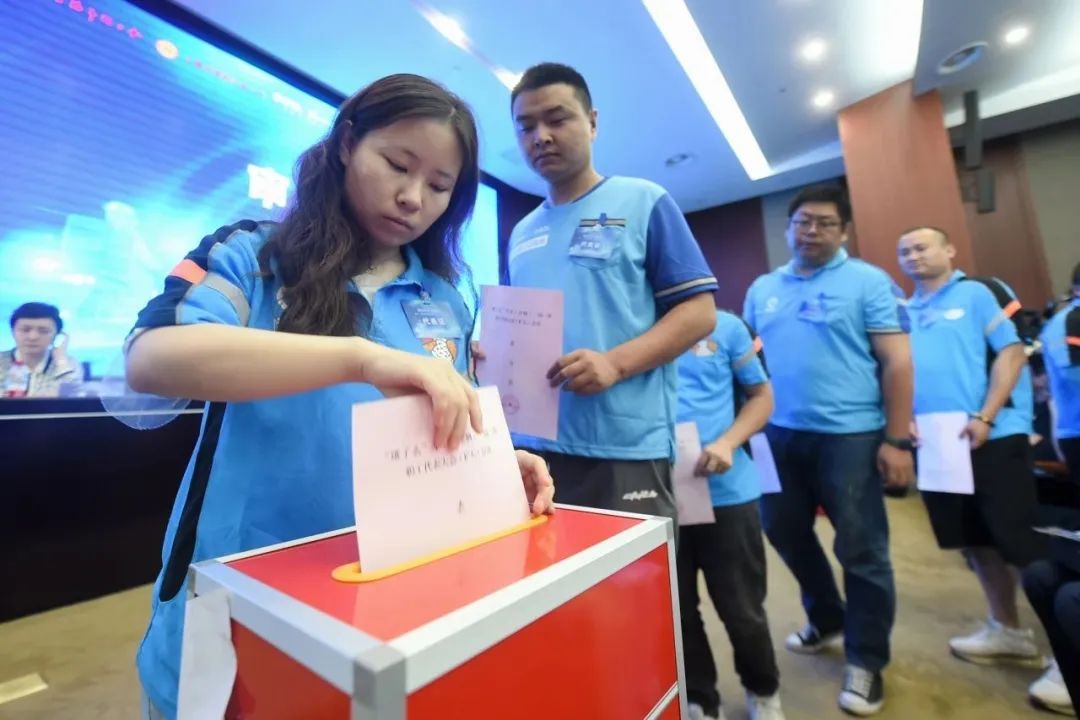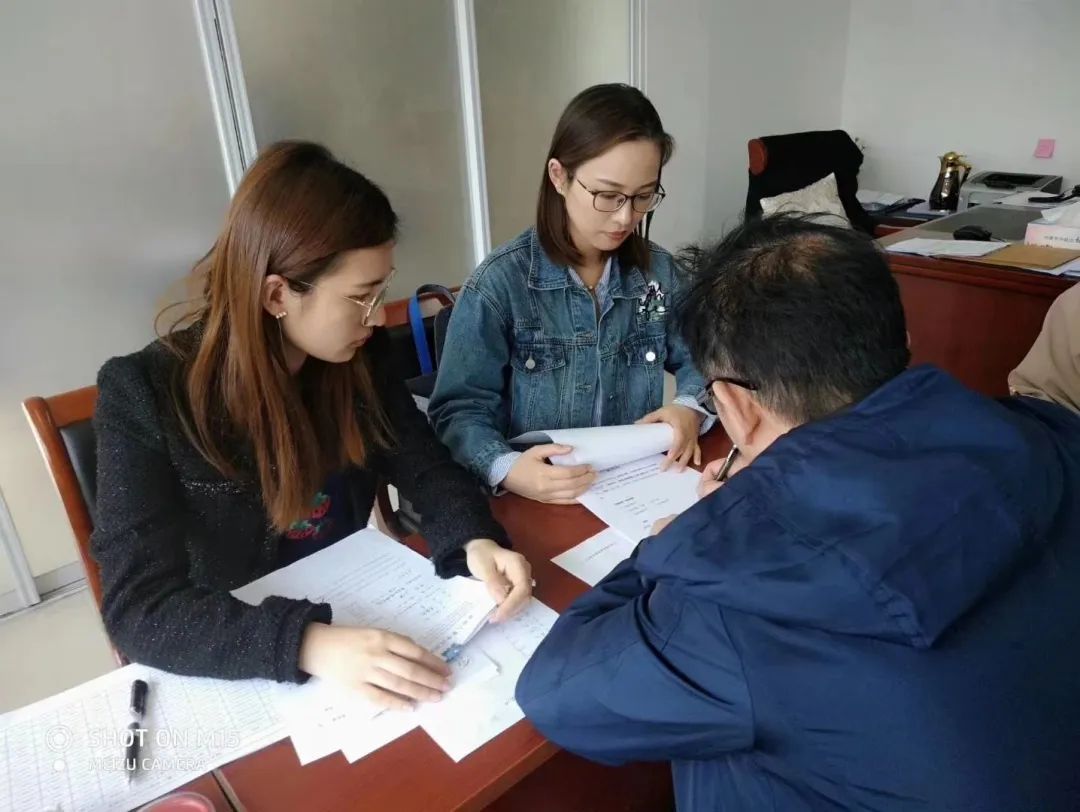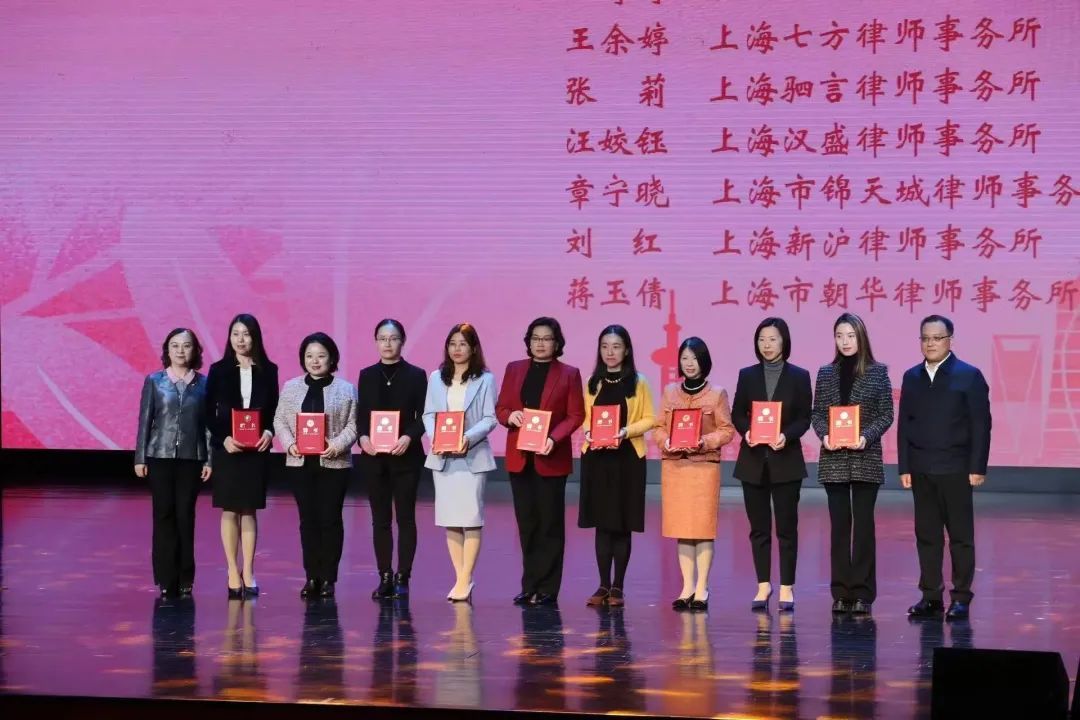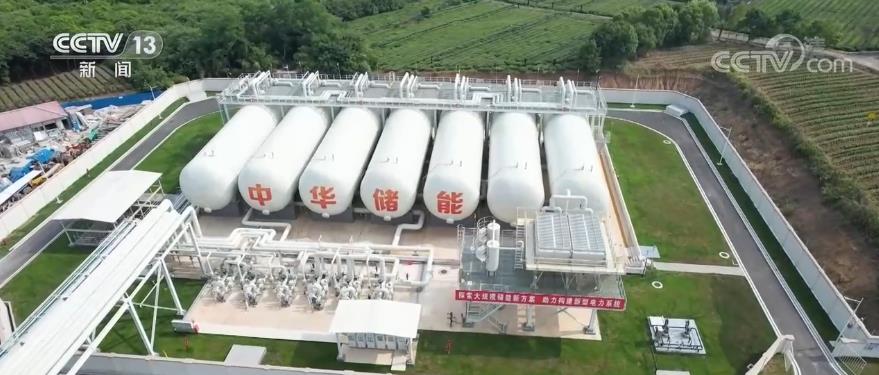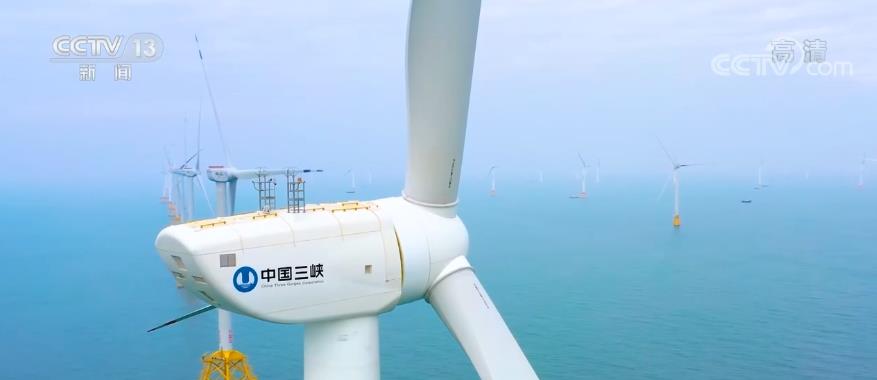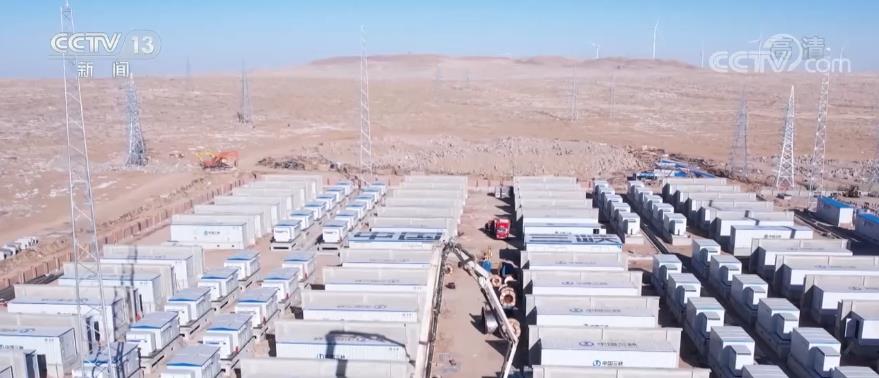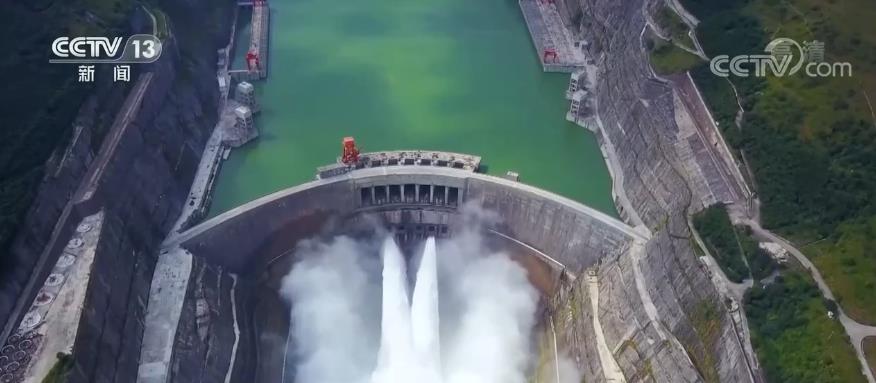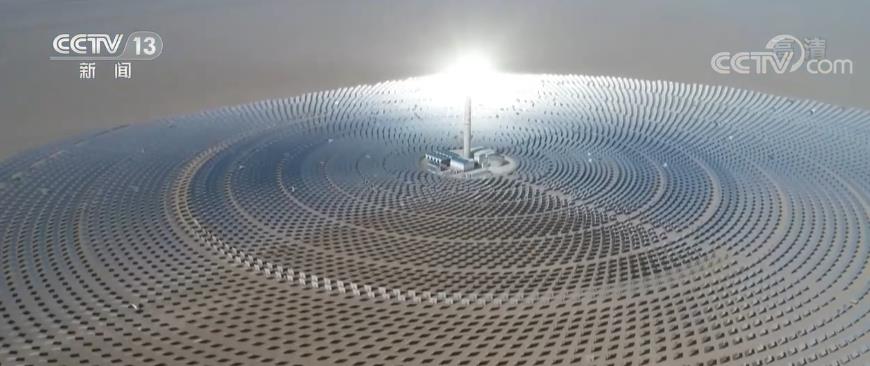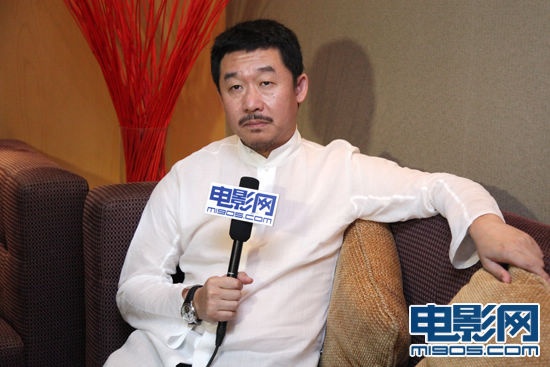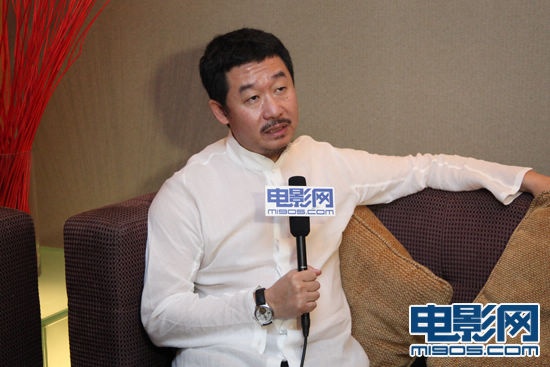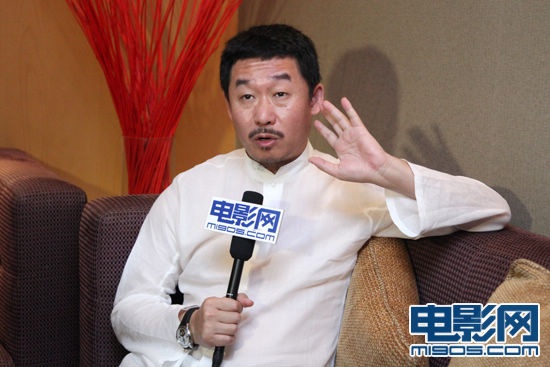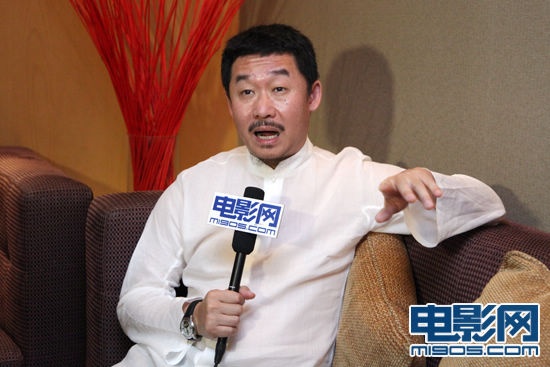Editor’s Note: Looking back at the 40-year history of reform and opening up, it is the period of rapid urbanization in China. The reform dividend has been greatly released in the process of urban development and citizenization of population, thus giving birth to a number of world-class big cities that China is proud of. With the spatial development boundary of many big cities facing the "ceiling", environmental pollution, traffic congestion and other big city diseases frequently occur, the "single soldier" path of urban development is out of date, and the marginal effect of reform is decreasing. Therefore, as early as the 11th Five-Year Plan, China proposed that urban agglomeration should be the main form to promote urbanization. As a result, the new path of urban development has become a trend. The report of the 19th National Congress of the Communist Party of China further pointed out that urban agglomerations should be the main body to build an urban pattern of coordinated development of large, medium and small cities and small towns, and accelerate the urbanization of agricultural transfer population. In the new wave of reform and opening up, what reform dividends will the deepening urban agglomeration development strategy bring to China, and what kind of interest disputes and development dilemmas will it face? The editorial department of the semi-monthly talks organized an urban agglomeration research team before the National People’s Congress, and went to many places to learn about the latest trends of the development of major urban agglomerations and explore new ideas, new models, new paths and new hopes for the development of urban agglomerations.
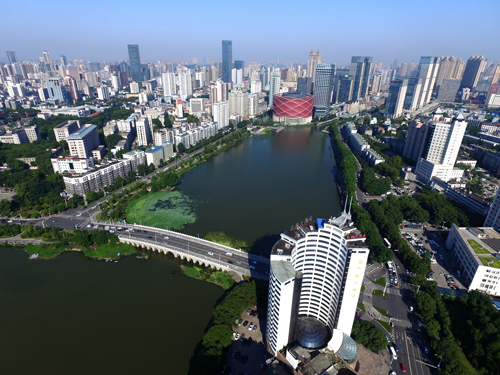
Reconstruction of "New Map" of China Economy by Urban Agglomeration
Half-monthly discussion on urban agglomeration investigation team
With the rapid development of industrialization and urbanization in China, the development pattern of urban agglomeration, as the main form of new urbanization, has begun to emerge, and has gradually become an important carrier and platform to lead China’s economic transformation and upgrading. Multi-dimensional urban integration is promoting the interconnection and coordinated integration of urban agglomerations, which not only optimizes the original urban system and pattern, but also brings more tangible sense of gain to the people.
The core that determines the future regional competitiveness
Urban agglomeration refers to a group of cities with compact spatial organization, close economic ties, and finally a high degree of urbanization and integration, which is formed by taking more than one mega-city as the core and at least three mega-cities as the constituent units and relying on developed infrastructure networks such as transportation and communication.
Fang Chuanglin, director of the Regional and Urban Planning Research Center of the Institute of Geographical Resources of China Academy of Sciences, pointed out that urban agglomeration is the mainstream and trend of urban development in the world today. At present, there are five recognized large-scale world-class urban agglomerations, such as the Atlantic coastal urban agglomeration with new york as the center, the Great Lakes urban agglomeration with Chicago as the center, and the Pacific coastal urban agglomeration with Tokyo as the center.
Globally, urban agglomeration has become a brand-new regional unit for countries to participate in world competition and international division of labor, which determines the new pattern of political and economic development in the 21st century, is an important carrier of the shift of world economic center of gravity, and is also the main position of competition between countries. According to the World Bank’s report "Reshaping World Economic Geography", half of the world’s production activities are concentrated on only about 1.5% of the world’s land area. Take the urban agglomeration along the Atlantic coast of the United States as an example. This urban agglomeration with an area of 60,000 square kilometers, accounting for 1.5% of its land area, has a population of 45 million, accounting for 20% of the total population of the United States; The manufacturing industry accounts for 30% of the country’s total output value, and it is the largest production base, commercial and trade center in the United States and the largest international financial center in the world.
Nowadays, the construction of urban agglomerations in China is advancing rapidly, and the development pattern has initially taken shape. According to the relevant national planning, urban agglomeration is the main form of new urbanization, and the development priorities of the three major urban agglomerations in the eastern region and several urban agglomerations in the central and western regions are defined, with emphasis on the development of urban agglomerations such as Beijing-Tianjin-Hebei, Yangtze River Delta, Pearl River Delta, Chengdu-Chongqing, Central Plains, the middle reaches of the Yangtze River and Harbin-Changzhou. Judging from the development degree, the Yangtze River Delta, Pearl River Delta and Beijing-Tianjin-Hebei urban agglomerations are relatively mature, and their comprehensive development level has an absolute advantage, representing the highest form of urban agglomeration development in China.
Zhang Xueliang, deputy secretary-general of the China Association for Regional Science and vice president of the School of Urban and Regional Science of Shanghai University of Finance and Economics, believes that urban agglomeration is the core that determines the future regional competitiveness and will become the "main engine" of China’s development. The reason is that China’s regional economy is changing from "plate economy" to "urban agglomeration economy", and all kinds of production factors and economic activities are gathering in the central city and the urban areas around the central city. In 2013, 23 urban agglomerations in China, accounting for 28.9% of the country’s land area, gathered 63.8% of the country’s population and created 85.7% of the regional GDP.
"polymerization effect" has become a new kinetic energy to stimulate transformation.
"Our Taifu reloads more than 80% of employees’ homes in Changsha, and the company sends 8 buses to and from Changsha and Xiangtan every day to pick up and drop off employees." Xie Fangli, vice president of Taifu Heavy Equipment Group, headquartered in Xiangtan National Economic Development Zone, told reporters that as Changsha, Zhuzhou and Xiangtan entered the "half-hour commuting circle", there were more and more cross-city office workers in the three cities. The development of Changsha-Zhuzhou-Xiangtan urban agglomeration in Hunan Province is getting better and better, and the integration and synergy effect are obvious. No matter the economic aggregate, growth rate and development quality, it ranks in the forefront of Hunan Province, achieving the effect of "1+1+1>3".
The "agglomeration effect" of urban agglomeration is becoming a new kinetic energy to promote China’s economic transformation and a "strong engine" to stimulate urban innovation in the region. In the Yangtze River Delta, the "Shanghai-Jiaxing-Hangzhou G60 Science and Technology Corridor", which aims to create an influential scientific and technological innovation highland in the world, is fully promoting its construction. Shanghai has the leading capability of scientific and technological innovation in China, and Hangzhou is building a globally influential "internet plus" innovation and entrepreneurship center, with G60 Expressway as the link, Shanghai and Hangzhou as the dual core, and Jiaxing as the supporting area, breaking administrative divisions, promoting the free flow and optimal allocation of scientific and technological elements such as talents, funds, devices and projects, and the resulting innovation ecosystem and industrial cluster effect have become the key to the rapid rise of the region and maintaining sustainable development. The data shows that the added value of information economy in Hangzhou in 2016 was 268.8 billion yuan, contributing more than 50% to the city’s GDP growth.
The practice of "Shanghai-Jiaxing-Hangzhou G60 Science and Technology Corridor" is only the epitome of industrial transformation and upgrading in the Yangtze River Delta urban agglomeration. Urban agglomeration has become an important growth pole of regional economy, which will reconstruct the "new map" of economy and support China’s sustained economic development in the future.
On the Guangzhou-Shenzhen Expressway with a length of more than 100 kilometers, there are a number of leading enterprises in the industry and "Gazelle Enterprises" with good growth and leaping development trend. Eight local Fortune 500 companies have taken root here, and world-renowned companies such as Tencent, Huawei, ZTE, DJI and OPPO have thrived here. These star enterprises are like pearls, strung together an innovative "necklace".
Yuan Jun, vice president of Guangdong Academy of Social Sciences, pointed out that with the development of 40 years of reform and opening up, the Guangzhou-Shenzhen axis region, which is based on Guangzhou-Shenzhen expressway and rail transit, has gathered innovative elements such as high-tech talents, technology, information and capital, and initially formed the Guangzhou-Shenzhen innovation economic belt. In the future, more new technologies and new ideas will be integrated across the border in this innovation corridor, forming a super-industrial cluster with "blood" and becoming a sample of national innovation and development.
The "community of urban destiny" is beginning to take shape.
Many places are accelerating integration from multiple dimensions, trying to break down institutional and institutional barriers such as administrative divisions, and promoting inter-city interconnection and collaborative integration, and the "same city effect" is becoming increasingly apparent.
As a symbol of China’s sharing economy, the birthplace of bike-sharing is the Yangtze River Delta urban agglomeration. The reporter found in an interview with the Yangtze River Delta urban agglomeration that the connotation of sharing economy is constantly expanding, from the earliest bike-sharing and shared houses to a higher field and level.
For example, sharing scientific and technological innovation resources. Under the guidance of the Ministry of Science and Technology, three provinces and one city in the Yangtze River Delta jointly launched the "Yangtze River Delta large-scale scientific instruments cooperation and sharing network". There are 1479 units and 17081 sets of large-scale scientific instruments and facilities with a value of more than 300,000 yuan in Shanghai, Jiangsu, Zhejiang and Anhui, with a total value of 18.274 billion yuan, which effectively reduces the repeated investment in scientific research funds and experimental equipment purchase in the region.
In the shared factory based on the Internet, new entrants can entrust the existing capacity processing and manufacturing without building their own factories in the case of overall excess manufacturing capacity. Yuan Wei, general manager of Alibaba’s "Amoy Factory" business, said that sharing factories will commercialize the factory’s production capacity and rationally distribute production, which will help promote industry competition to turn to industry cooperation.
In addition to transportation integration, urban agglomerations also actively explore the integration of medical and health care, ecological and environmental protection and other fields. For example, Jiaxing and three medical institutions in Shanghai have established a cooperative relationship of peer-to-peer medical insurance network settlement, and the insured citizens can pay by credit card in hospitals in Shanghai through system direct connection. In order to solve the persistent problem of air pollution, the Beijing-Tianjin-Hebei region has accelerated the replacement of coal with electricity and gas, and achieved the "zero clearing" of loose coal. The average concentration of PM2.5 decreased by about 33% in 2016 compared with 2013.
The awareness of "dividing land into three parts per acre" among cities has been further broken, and coordinated development is getting better and better. Hebei Province has successively undertaken more than 12,000 industrial transfer projects such as advanced equipment manufacturing in Beijing and Tianjin, new generation information technology and modern trade logistics, and the investment of Beijing enterprises in Tianjin and Hebei has exceeded 200 billion yuan. "Industrial synergy is the substantive content and key support for the coordinated development of Beijing-Tianjin-Hebei." Zhang Junkuo, deputy director of the State Council Development Research Center, said that Beijing, Tianjin and Hebei are working together to build a community of urban destiny with coordinated development through industrial complementarity and integration. (Half-monthly talk about urban agglomeration research team: Fang Lie Liu Liangheng He Xinrong Xu Xuzhong Li Junyi Juck Zhang Bai Mingshan Zhao Ruixi)
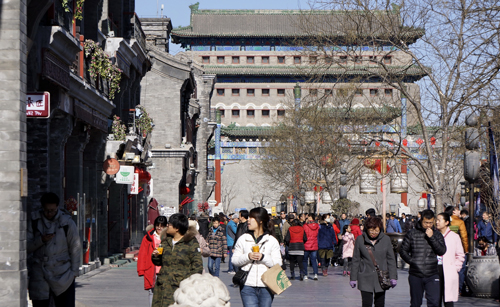
The Central Committee of the Communist Party of China and the State Council on the Beijing Urban Master Plan (2016 — The reply of "2035)" proposes to do a good job in protecting historical and cultural cities and shaping urban characteristics. The old city can no longer be demolished, and it should be guaranteed by vacating and restoring construction. The picture shows tourists visiting Xin Li in Qianmen Street, Beijing.
The development of urban agglomeration cannot lose its "soul"
Half-monthly discussion on urban agglomeration investigation team
For a long time, the construction of urban agglomerations in China has always tended to attach importance to economy and neglect culture. Although the economic aggregate and transportation infrastructure have taken on a new look, the development of cultural soft power has lagged behind, and urban construction has lost its soul, which seriously restricts the sustainable development of urban agglomerations. Experts and scholars call on China to reverse the development path of urban agglomerations that emphasize economy and neglect culture, cultivate the cultural mechanism of urban agglomerations with distinct hierarchical system and active coordination, rebuild and revive the "small traditional culture" in different regions, enhance the cohesion of cultural identity, and build a "culturally confident urban agglomeration".
More than 600 cities have basically lost their individuality.
"Our more than 600 cities have basically lost their individuality, with vague context and vague memories, fragmented historical remains and chaotic cultural symbols." Feng Jicai, a famous writer, commented. Wu Liangyong, an academician of the two academies, also pointed out that the lack of personality is the biggest drawback of urban construction in China.
Mentioning the old railway station in Jinan is a pain that haunts the hearts of Jinan citizens. This railway station, which was built in 1904, was the only Gothic building community station in the world and the largest railway station in Asia at that time. It was once listed in the architectural textbooks of Tsinghua and Tongji, and was also listed as the first stop in the Far East by Travel in the Far East published by West Germany after the war. In 1992, the railway station was demolished to expand the station yard.
The fate of the old railway station in Jinan is only a microcosm of the destruction of historical sites and the cutting of urban context in the process of urbanization. This kind of phenomenon is also staged in Beijing, Tianjin and Hebei. Chen Ming, deputy director of the Regional Planning Institute of China Urban Planning and Design Institute, revealed that with the outward expansion of Beijing’s urban areas, Tianjin and Hebei have moved closer to Beijing, and a large number of industrial parks and residential quarters have been laid out, forming an "iron fence" around Beijing. In this process, the historical and cultural corridors distributed here have been damaged to varying degrees, and many historical relics have disappeared.
According to statistics, about 44,000 ancient sites, temples and other cultural relics in China have disappeared, and a quarter of the remains still preserved are in a state of dilapidated maintenance. Many sites have not been protected and have been demolished in new construction projects. More than 3,500 cultural sites have been destroyed in Shaanxi Province alone.
On the one hand, it wantonly destroys historical sites, and on the other hand, it is keen to build high-rise buildings and move to foreign buildings, resulting in a "thousand cities on one side" of the city, many of which are grotesque and charming. Many cities have planned to build residential communities and "characteristic towns" with North American and European customs, and they have been crowned with foreign names: Florence Town, Paris Mansion, California Garden, Manhattan Plaza and so on.
Culture is the "lubricant" of inter-city communication.
What is even more worrying is that the development path of "emphasizing economy and neglecting culture" leads to unbalanced development, which seriously restricts the sustainable development of urban agglomerations. Fan Zhou, dean of the Institute of Cultural Development of Communication University of China, pointed out that the ideal urban agglomeration is an urban community with a reasonable hierarchical system in terms of population, economy, society, culture and overall structure, and complementary functions and good coordination mechanisms in terms of spatial boundaries, resource allocation, industrial division of labor and cultural exchanges. "In fact, culture, as the soul of a city, can play a unique role in highlighting the humanistic characteristics of the city and enhancing the cultural identity of the city." Fan Zhou said.
Cannes, a famous French city, was once a small fishing village. In 1939, France established the Cannes Film Festival to fight against the Venice International Film Festival controlled by the Italian fascist regime at that time, which put Cannes on the fast track of urban development. After decades of development, Cannes International Film Festival has become one of the four largest and most important film festivals in the world, attracting more than 300,000 people every year, bringing great economic benefits and good reputation to the city. Cannes has thus become a world famous city. Around the world, Paris, Vienna, Stockholm … … And the list goes on.
"Culture has the characteristics of high added value and high penetration. It is an important thrust for industrial integration to be related to finance, grafted with technology and symbiotic with the Internet." Fan Zhou pointed out that the integration of culture and economy has become an inevitable trend and a new growth point for the economic development of urban agglomerations. Take Hangzhou as an example. In recent years, represented by its unique Liangzhu culture, silk culture, tea culture and many stories and legends handed down, Hangzhou has paid attention to the natural transition between traditional streets and modern life, and formed a unique external cultural understanding of "Qiantang Prosperity" and "Leisure and Elegance", which has promoted the competitiveness of urban culture.
Peng Jinsong, deputy director of the Institute of Urban Development of Chongqing Academy of Social Sciences, believes that the transaction cost or friction cost of urban agglomerations formed on the basis of culture will be reduced in factor flow, commodity trading and other social interactions, which is conducive to maintaining the development and normal operation of urban agglomerations. For example, the Yangtze River Delta, the Pearl River Delta, the west side of the Taiwan Strait, Chengdu and Chongqing are supported by Wuyue culture, Lingnan culture, Minnan culture and Bashu culture respectively, which play a vital role in enhancing cultural identity and cohesion among cities.
Fill the "cultural gap" and build the "soul of the city"
Liu Shilin, president of the Urban Science Research Institute of Shanghai Jiaotong University, suggested that in the face of the "lack of culture" of urban agglomerations, China should reverse the development path of urban agglomerations that "emphasize economy and neglect culture", promote the innovation of urban planning theory, methods, institutional mechanisms and the protection of laws and regulations, effectively protect and inherit the urban context, and strive to build a "culturally confident urban agglomeration".
Do a good job in top-level design, strengthen policies and mechanisms and legal protection. Based on the inherent laws of cultural construction in the process of urbanization, we will constantly improve various laws, regulations, supporting policies and rules and regulations such as cultural relics, ancient buildings, protection of historical blocks, protection and inheritance of intangible cultural heritage, and establish an institutional system for urban cultural protection and cultural heritage.
Promote the innovation of urban planning theory, method and system and mechanism. It is suggested that the relevant state departments should take the lead in selecting experts from traditional disciplines such as literature, history, linguistics, philosophy, art and sociology, as well as emerging disciplines such as urban science, cultural studies and cultural industries, and carry out in-depth basic theoretical research, so as to develop a standard system of cultural planning in China corresponding to the international community, and provide scientific theory and strategic guidance for the planning and construction of urban agglomerations in China.
Adhere to overall coordination and integrate social resources. It is necessary to fully mobilize social forces and private capital to participate in urban cultural protection and cultural heritage. Realize the integration of resources and channels and the diversification of cultural protection and inheritance subjects and methods. It is necessary to make full use of emerging technologies such as the Internet, big data and cloud computing to realize the creative transformation of traditional culture and make urban culture "live".
In addition, establish a scientific evaluation mechanism to realize dynamic management. It is necessary to establish a dynamic tracking management mechanism before, during and after the event, do a good job in statistical monitoring and performance evaluation, and constantly adjust management methods and policies and measures according to the evaluation feedback. (Half-monthly talk about urban agglomeration research team: Fang Lie Liu Liangheng He Xinrong Xu Xuzhong Li Junyi Juck Zhang Bai Mingshan Zhao Ruixi)
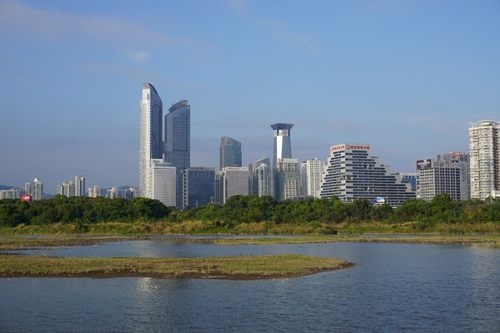
This is Shenzhen Futian Mangrove Nature Reserve located in the hinterland of the city. The beautiful environment benefits from industrial innovation and institutional innovation. The high-standard green economic system and the closed-loop reform of the ecological civilization system have enabled Shenzhen’s "ecological dividend" to be released. Photo by Wang Xiaodan
To cure "serious illness", it is necessary to build a "green urban agglomeration"
Half-monthly discussion on urban agglomeration investigation team
Because of the large-scale population and economic activities in urban agglomeration, environmental pollution and other "big city diseases" are increasingly prominent. On the practical level, there are some problems in the environmental collaborative governance system of urban agglomerations in China, such as imperfect laws and regulations, lack of authority in the collaborative mechanism and insufficient participation of social forces. Therefore, it is necessary to reshape the pattern of coordinated environmental governance of urban agglomerations, such as source control, open cooperation and multi-governance, in order to reverse the deterioration trend of urban agglomerations’ environment.
"serious illness" of urban agglomeration
"The smog in the Beijing-Tianjin-Hebei region has been too heavy in recent years. My wife and I are particularly worried that the health of children will be affected. After a long hesitation, we finally made up our minds to leave Beijing. " Zeng Cheng, 32, gave up his decent job in a financial central enterprise two years ago, and married with children came to Shenzhen to start over. He said that although it was necessary to move, the whole family felt comfortable now.
According to "2016 China Environmental Status Bulletin" issued by the Ministry of Environmental Protection, the proportion of excellent days in 13 cities at or above the prefecture level in that year ranged from 35.8% to 78.7%, and the average proportion of days exceeding the standard was as high as 43.2%. Among the 74 monitoring cities, 10 cities with relatively poor ambient air quality accounted for 6 in Beijing, Tianjin and Hebei.
In addition to smog, acid rain pollution in some urban agglomerations cannot be underestimated. According to the monitoring of the Ministry of Environmental Protection, the acid rain area in China was about 690,000 square kilometers in 2016, accounting for 7.2% of the land area. It is worth noting that these acid rain pollution "hardest hit areas" are highly overlapped with urban agglomerations such as the Yangtze River Delta, the Pearl River Delta, Chengdu-Chongqing and the middle reaches of the Yangtze River.
Today’s environmental protection management can’t go it alone. During the "Twelfth Five-Year Plan" period, the relevant ministries and commissions of the state issued intensive regulations and policies on environmental cooperative governance of urban agglomerations. In 2012, the Twelfth Five-Year Plan for the Prevention and Control of Air Pollution in Key Areas was issued, which requires the establishment of a joint prevention and control mechanism for regional air pollution in key urban agglomerations such as Beijing-Tianjin-Hebei, Yangtze River Delta and Pearl River Delta.
In addition to the top-level design launched by the central government and ministries, the cooperation between local governments has been deepened, and multi-level inter-city cooperation mechanisms have been established in urban agglomerations such as the Yangtze River Delta, the Pearl River Delta, Chengdu-Chongqing and Changsha-Zhuzhou-Xiangtan, Hunan. For example, Guangzhou and Foshan have continuously improved the regional environmental monitoring network, jointly promoted the construction of the water environmental quality monitoring network, determined the monitoring norms of cross-border river basins, and informed each other of the water quality monitoring data of cross-border sections.
During the interview in Changsha, Zhuzhou and Xiangtan, the local cadres and the masses talked about Hunan’s protection of Changsha, Zhuzhou and Xiangtan’s "green heart". Lvxin is located in the junction of Changsha, Zhuzhou and Xiangtan, covering an area of 522.87 square kilometers. This area is full of low hills, lush vegetation and lush. At one time, under the guidance of the thinking of "space city", the urban boundaries of the three cities continued to expand, and the green heart was once eroded and eroded, shrinking year by year. Decision-makers in Hunan have gradually realized that making use of the location advantage of Green Heart to become a "green wedge" between Changsha, Zhuzhou and Xiangtan urban agglomerations can effectively prevent the spread and expansion of the three cities. After that, starting with the planning and legislative guarantee, Hunan successively issued the Master Plan for the Ecological Green Heart Area of Changsha-Zhuzhou-Xiangtan Urban Agglomeration and the Regulations on the Protection of the Ecological Green Heart of Changsha-Zhuzhou-Xiangtan in Hunan Province, which kept this precious green space in the middle of the urban agglomeration.
Although the progress of joint prevention and control of ecological environment in China’s urban agglomerations is obvious, it is still far from enough, and it has not yet stepped out of the dilemma of "one side controls the pollution, and where there is a problem, where there is a problem". The cooperation between some local governments only stays in words and on paper, and has not really turned into joint action.
Beijing borders Huailai County, Zhangjiakou City, with an administrative boundary line of 115 kilometers. "Taking the mountain as the boundary, one mountain is worth two days. You don’t need to look at the road signs. If there are fewer and fewer trees on the mountain, you will go out of the Beijing boundary and get pregnant." People in Huailai County often say this to Beijing tourists. In addition to the drought and lack of rain as we go northward, the financial input standard of afforestation and forest protection is an important reason. "The financial investment of planting an acre of land in the mountains in Yanqing District of Beijing is 8,000 yuan. It is good for Huailai to take out 800 yuan." A garden worker in Huailai County revealed. In fact, as an ecological conservation area in Beijing, Tianjin and Hebei, Huailai County does not neglect ecological protection, but the difference in investment is determined by financial strength and economic level.
Chen Ming, deputy director of the Regional Planning Institute of China Urban Planning and Design Institute, said that the root cause of the above phenomenon mainly lies in administrative division, the coordination mechanism within urban agglomerations has not been straightened out, and the authority of the coordination agencies is insufficient, which leads to the administrative subjects acting in their own way and constraining each other. In addition, the existing environmental laws and regulations in China have not yet defined the main body and power and responsibility of environmental governance in urban agglomerations, and it is difficult to ensure the implementation of inter-city cooperation, which weakens the effectiveness of cooperation policies.
"The internal environmental protection standards of urban agglomerations are different, with obvious differences, relatively simple policy means, mostly mandatory means, lack of economic regulatory and encouraging policies, and poor social participation." Li Yue, a professor at the Party School of Changsha Municipal Committee, said.
How to build a "green urban agglomeration"
Environmental cooperative governance of urban agglomeration is a cross-administrative collective action based on common destiny and common development, which needs to coordinate and balance the interests of all parties and form an institutionalized and standardized cooperative mechanism. In this regard, some exploration experiences at home and abroad are worth learning.
First, balance the interest relationship between the environmental protection contribution areas and the environmental protection benefit areas within the urban agglomeration. Wang Kexiu, a professor at the Department of Economics Teaching and Research at the Party School of Hunan Provincial Party Committee, said that the interest compensation mechanism should be based on the principle of "polluters pay, managers benefit, and beneficiaries compensate". For example, the improvement of Changsha’s environment needs the support of upstream cities such as Zhuzhou and Xiangtan. If Changsha and the upstream cities can reach an interest compensation mechanism, it will accelerate the whole process of environmental improvement in the Changsha-Zhuzhou-Xiangtan urban agglomeration and Xiangjiang River basin.
Second, enhance the authority and enforcement of the environmental collaborative governance mechanism. For example, in the process of controlling ozone pollution in Los Angeles urban agglomeration, the United States has established a joint prevention and control mechanism of regional air pollution with unified planning, monitoring, supervision, evaluation and coordination. Several states in the northeastern United States have also jointly established the Ozone Transport Association (OTC), which is composed of state representatives and members of the Environmental Protection Agency, and is responsible for setting regional emission reduction targets for volatile organic compounds and nitrogen oxides and supervising their implementation.
Third, give play to the decisive role of the market in the allocation of environmental resources in urban agglomerations and build a multi-incentive and restraint mechanism. For example, taking the property rights of resources and environment as the core, we should improve the system of paid use of resources, levy carbon tax on enterprises with high pollution and high energy consumption, implement the system of pollutant discharge permit and emission trading, force the industrial transformation and upgrading in urban agglomerations, and improve the ecological compensation mechanism in urban agglomerations.
Fourth, enhance public participation and strengthen law enforcement. "In the formulation of environmental legislation and standards, the United States has provided smooth channels of participation and supervision mechanisms for the government, enterprises, media and non-governmental organizations, and formed effective public supervision, thus promoting the government’s determination and strength in governance." Greg Yarwood, a member of the Scientific Advisory Committee of the Clean Air Research Program of the US Environmental Protection Agency, believes that although many urban agglomerations in China are different from those in Los Angeles and other places in the United States, the governance process also needs the attention and full cooperation of the government, enterprises and the public. (Half-monthly talk about urban agglomeration research team: Fang Lie Liu Liangheng He Xinrong Xu Xuzhong Li Junyi Juck Zhang Bai Mingshan Zhao Ruixi)

